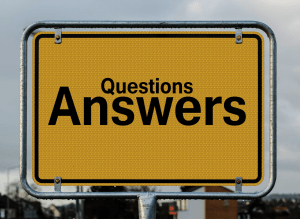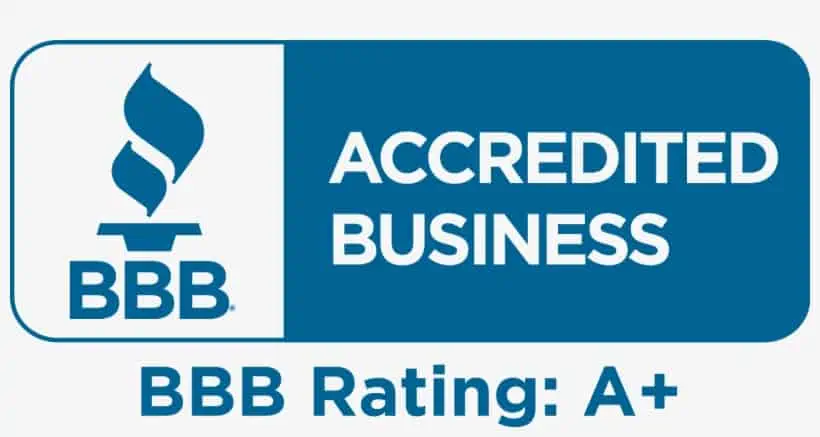Last Updated: February 21, 2024
The following information for determining and reporting your solo 401k contributions and answers to specific questions apply if your self-employed business is an LLC taxed as an S-corporation, or your entity type is an S-corporation or C-corporation.
For incorporated business owners, Solo 401k contributions will generally be based on the business owner’s compensation, which is often defined as Social Security wages (as reported on IRS Form W-2). However, incorporated business owners should be sure to understand the definition of compensation within their plan documents, as the definition of compensation can vary slightly from one plan document to the next.
2023 & 2024 Video Slides: https://www.mysolo401k.net/wp-content/uploads/2024/03/FINAL-2.23.2023-2023-2024-Contribution-Guide-S-Corporation-C-corporation-LLC-taxed-as-S-corp-C-corp.pdf
2023: The maximum Solo 401k contribution for tax year 2023 is $66,000 plus $7,500 if you are 50 or older in 2023.
2024: The maximum Solo 401k contribution for tax year 2024 is $69,000 plus $7,500 if you are 50 or older in 2024.
2023 & 2024 Solo 401k Contribution Guides-Deep Dive
- Slides: S-corporations, C-corporations, LLC taxed as S-corp./C-corp., W2
- Video: https://www.youtube.com/live/g3vs9sTmzqs?si=SleRrR0izUHTJ46L
2023 & 2024 Mega Backdoor Roth Solo 401k Guides- Deep Dive
- Slides: Mega Backdoor Roth Solo 401k Deep Dive (S-corp., C-corp., LLC taxed as S-corp, W-2)
- Video: https://www.youtube.com/live/ze83X_4NbKc?si=81UD-vTicL78zW9C
Solo 401k Contributions Consist of Two Components
Remember that the maximum Solo 401k contribution is comprised of two components:
- Employer profit sharing contribution
- Employee salary deferral contribution
Once the incorporated business owner’s compensation is determined (or estimated in the case of advance planning), the maximum Solo 401k contribution may be determined as follows, based on 2023 and 2024 limitations.
With respect to your self-employment income earned from your S-corporation, you can contribute:
- Employee contribution equals $22,500 for 2023 (plus an additional $7,500 if you are 50 or older). For 2024, the employee contribution limit increased to $23,000 (plus an additional $7,500 if you are 50 or older). Note that you must have the applicable W-2 wages from your self-employed corporation to justify the solo 401k contribution amount. The contribution is based on the amount listed in Box 1 of your w-2 from the S-corporation plus any pre-tax employee contributions not in Box 1. Note: The employee pretax and Roth contributions but NOT the voluntary after-tax contributions must be reduced by any contributions made to another 401k plan (e.g. a “day job” plan). Also, you cannot contribute more than you report on the W-2 from your self-employed business. For example, if you only report $10,000 on your W-2, you cannot contribute the $23,000 allowed limit for 2024.
- Employer contribution equal to 25% of the amount equal to Box 1 of your w-2 from the S-corporation plus any pre-tax elective deferrals not in Box 1 provided that the total sum of the contributions does not exceed the overall limit: $61,000 for 2023 (plus $7,500 catch up if you are 50 or older), or $69,000 for 2024 plus $7,5000 if you are 50 or older.
Step 1: Determine maximum profit sharing contribution
maximum profit sharing contribution = .25 x compensation
Step 2: Determine maximum salary deferral
maximum salary deferral = lesser of $23,000 (2024 limit), or
compensation-maximum profit sharing contribution
Step 3: Calculate maximum Solo 401(k) contribution
maximum Solo 401(k) contribution = maximum profit sharing contribution
+ maximum salary deferral
NOTE: The maximum Solo 401(k) contribution for 2024 may not exceed $69,000 (unless your age 50 or older and therefore qualify for an additional $7,500 of catch-up contributions).
Solo 401k Contribution Example for Tax Year 2023
For example, if you are under 50 years of age, not making any contributions to any other plan such as a 401k plan offered by your full-time employer, and you receive a W-2 from your S-corporation that shows $32,000 in Box 1 with $22,500 of pre-tax employee contributions not in Box 1 you can contribute the following amounts for 2023:
- Employee Contribution: $22,500 (i.e. the lesser of $22,500 and $54,500 which is the sum of $32,000 and $22,500)
- Employer Contribution: $13,625 (i.e., 25% of $54,500 which is the sum of $32,000 and $22,500).
IMPORTANT COMPLIANCE NOTE: Owners of Subchapter S corporations must base their contributions on Form W-2 income and may not base Solo 401k contributions on pass-through profits.
You can use our online Solo 401k contribution calculator to determine your contribution; CLICK HERE.
Income Needed for Maximum Contribution QUESTION:
In order to maximize the full amount I can contribute to the Solo 401K yearly, what should my W2 earnings look like “at minimum”, as well as the company’s revenues?
ANSWER:
The ability to contribute to a solo 401k plan is based on your self-employment income and the specific calculation depends on how your business is taxed (e.g. sole proprietor, S-corporation, etc.). For example, if your business is taxed as a sole proprietorship it is based on your net income as reported on Schedule C. If your business is taxed as a S-corporation, it is based on your W-2 wages. For example, if you are under 50 and your business is taxed as an S-corporation (and you are not making any contributions to another 401k plan such as through a day job), then for 2023 you would be able to contribute the following amounts:
Example 1: Only make voluntary after-tax solo 401k contributions
Provided you receive $66,000 of W-2 wages from your self-employed business if it is taxed as an S-corporation, you can contribute $66,000 as a voluntary after-tax solo 401k contribution regardless if you also contribute to your day-time employer 401k.
For other exmaples, click here.
Can both Spouses Participate in The Solo 401k Plan QUESTION:
Is there any relationship between the new solo 401k trust and my existing S-Corp business, and can we transfer my and my wife’s IRA, and 401k funds to the solo 401k plan?
ANSWER:
In order to have a 401k, there must be an employer as 401k plans are for employees. As such, in order to set up a Solo 401k you must be self-employed. Therefore, this confirms that yes your self-employed business (i.e. S-Corp) will be the sponsor of the Solo 401k. As long as both you and your wife are working in the business (e.g. receiving w-2 wages from the S-Corp) then you can both participate in the Solo 401k plan and rollover funds from eligible pre-existing retirement accounts which would include non-Roth IRA accounts and former employer 401k plans.
Employer Profit Sharing Deduction for S-corporation Form 1120-S QUESTION:
On a federal 1120-S, does the profit-sharing belong on Line 17 and NOT on Line 18 (fringe benefits)?
ANSWER:
For an S-Corp, employer profit sharing contributions are deducted on line 17 of Form 1120-S not Line 18.
![]()
LLC Taxed as S-Corporation Contribution Deadline QUESTION:
ANSWER:
See also the following chart from IRS publication 560.

Employer Contribution and FICA & Medicare QUESTION:
Are employer contributions subject to FICA or Medicare Tax?
ANSWER:
In terms of tax benefits, profit-sharing plan

More S-Corporation Contribution Rules
The contribution limits that apply are different:
o Roth Salary Deferrals: For a self-employed business taxed as an S corporation, for 2022 you can contribute 100% of your W-2 wages not to exceed $20,500 (or $27,000 if you’re 50 or older).
For year 2023, the Roth salary deferral increased to $22,500 (or $30,000 if you are 50 or older).
Please note that this amount is reduced by any pretax salary deferrals made to the solo 401(k) as well as any salary deferrals made to another 401(k) plan (such as a 401(k) plan provided through “day job” employer).
o Voluntary After-tax Contributions: For a self-employed business taxed as an S corporation, you You can contribute up to the lesser of (i) 100% of your self-employment compensation (i.e. w-2 wages when your self-employed business is taxed as an S-corporation) or (ii) the overall limit ($61,000 for 2022 contributions) reduced by any pre-tax or Roth employee contributions/salary deferrals and any pre-tax employer/profit-sharing contributions made to the Solo 401k. For year 2023, the overall limit increased to $66,000.
S-Corporation Distributor Rules
The distribution/rollover rules applied differently:
o Roth Salary Deferrals: You generally can’t distribute (or rollover to another retirement account such as a Roth IRA) until you are 59.5.
o Voluntary After-tax Contributions: These amounts can be distributed/rolled over at any time.
o See more: https://www.mysolo401k.net/making-solo-401k-distributions/
- While the gains on voluntary after-tax funds are taxable, the gains on Roth funds may grow tax-free (i.e. if you are able to satisfy the qualified Roth distribution rules – see more here: (https://www.mysolo401k.net/what-is-a-qualified-roth-solo-401k-distribution/). Of course, if you transfer voluntary after-tax funds to a Roth sub-account the subsequent gains would grow on a tax-deferred and potentially tax-free basis.
One Solo 401k Plan for the Self-Employed Business QUESTION:
I have a number of 401k questions
2 of us own an LLC together. It is taxed as a C Corp so we each receive W2 wages.
My partner has a Solo 401k.
- Do I have to included in that 401k? Can I even be included in that 401k?
- Do I have to get a separate 401k if I want one? (I could get this from you right?)
- Do I have to do anything to NOT be included in their 401k?
- Can they have a 401k and me not be included and me not get a 401k plan for myself?
- Does this violate any “testing” requirements of their Solo 401k?
ANSWER:
The solo 401k plan is sponsored by the LLC, so both owner-employees can choose to participate in the solo 401k plan. If one owner employee does not participate, the other participating owner employee can still make both employee and employer contributions. Lastly, testing does not apply to owner-only plans as solo 401k plans.









